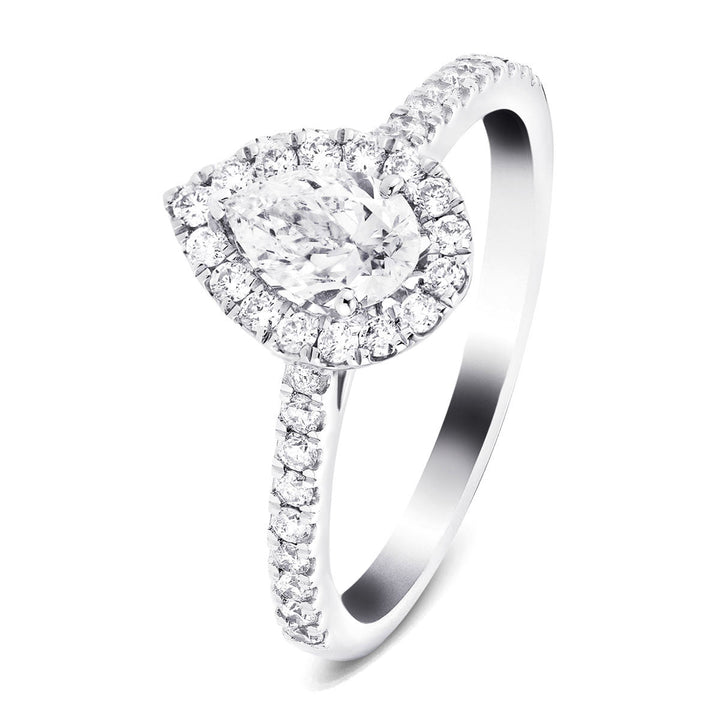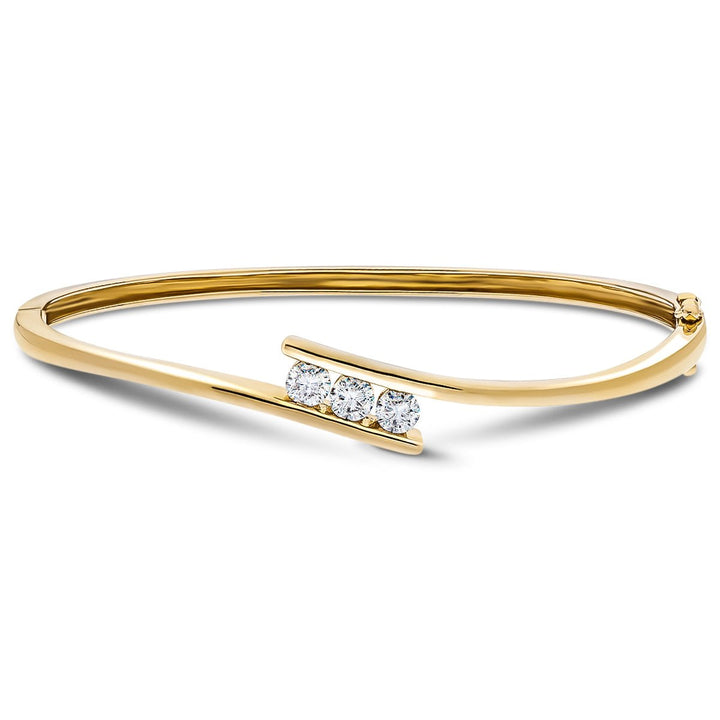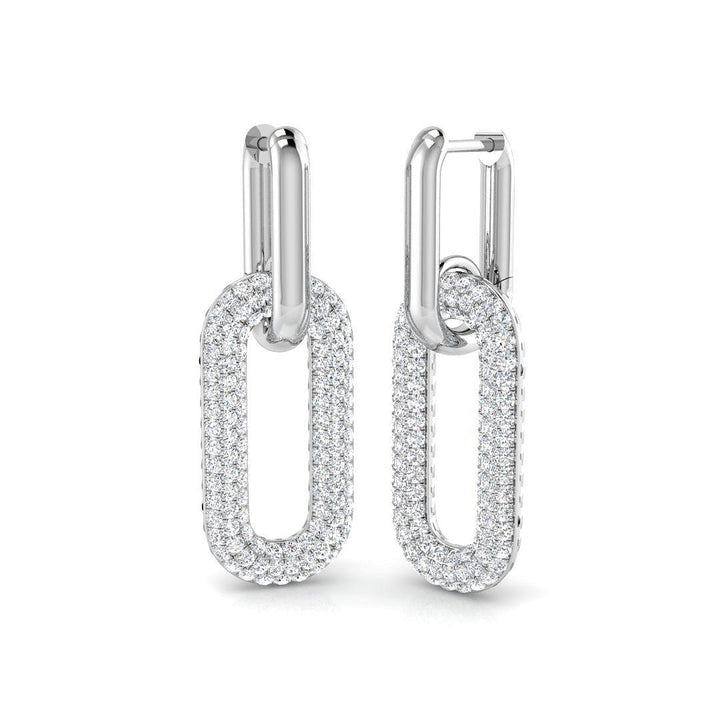In This Article
Hallmarks are vital safeguards for British jewellery buyers, serving as official quality stamps that confirm the authenticity and purity of precious metals. Under UK law, these marks provide significant protection against fraud, with approximately 150,000 fake gold items found annually. Each hallmark contains specific components: the sponsor's mark identifying the maker, the fineness mark showing metal purity, and the assay office mark indicating where testing occurred. This system, governed by the Hallmarking Act 1973, draws from over 700 years of tradition and continues to evolve with modern techniques like laser marking. Understanding these marks reveals the true value of your jewellery investment.
Main Highlights
- Hallmarks guarantee the authenticity and purity of precious metals, protecting buyers from approximately 150,000 fake gold items discovered annually in the UK.
- Hallmarking is a legal requirement under the Hallmarking Act 1973 ensuring quality standards, with mandatory testing by authorised assay offices.
- Hallmarking provides essential documentation for insurance, resale value, and dispute resolution under the Consumer Rights Act 2015.
- Hallmarks enable buyers to identify the metal's origin, date of manufacture, and maker through specific marks from official assay offices.
- Hallmarks offer consumer protection through clear standards and legal recourse if items do not match their hallmarked specifications.
Ella Lab Diamond Solitaire Engagement Ring 0.50ct D/VVS 18k Yellow Gold

£665.00
£1,271.00
Unveil your love with the magnificent Ella Lab Diamond Solitaire Engagement Ring, expertly crafted in the UK. This breathtaking ring showcases a dazzling 0.50-carat D/VVS-graded lab-grown diamond, IGI certified and set in 18k yellow gold, creating a beautiful contrast. The… read more
Understanding UK Hallmarking Laws

The hallmarking significance extends beyond simple quality control. The system requires that dealers display statutory notices explaining hallmarks, making the process transparent for buyers. Trading Standards departments actively enforce these regulations, with substantial penalties for non-compliance, including fines of up to £5,000 per item and potential seizure of goods.
Understanding hallmarking exemptions is just as crucial for buyers and sellers. Items below certain weight thresholds don't require hallmarks—for instance, silver pieces under 7.78 grams and gold items under 1.0 gram.
Furthermore, pieces manufactured before 1950 can be sold without hallmarks if they meet minimum fineness standards. Mixed metal and multi-precious metal items have specific requirements, guaranteeing that each component is clearly distinguishable and meets legal standards.
These regulations are overseen by the British Hallmarking Council and enforced through authorised assay offices across the UK.
Lab Diamond Flower Cluster Pendant Necklace 0.10ct in 925 Silver

£145.00
£205.00
This exquisite Lab Diamond Flower Cluster Pendant Necklace, featuring a total diamond weight of 0.10ct, encapsulates both elegance and precision craftsmanship. Each lab-grown diamond, boasting a D/VVS quality, is meticulously cut into a round shape, enhancing its brilliance and clarity.… read more
Components of British Hallmarks
 Examples of the Markings Found On British Precious Metals
Examples of the Markings Found On British Precious MetalsA complete British hallmark consists of four essential components that work together like pieces of a puzzle to authenticate precious metal items. Each component serves a specific purpose in verifying the quality and origin of precious metal pieces.
The compulsory Sponsor's mark significance lies in its ability to identify the maker or company responsible for the item through unique initials within a shield shape. These marks are typically arranged in a horizontal line format to maintain consistency and readability.
The optional Traditional fineness mark employs distinct symbols, such as a crown for gold or a lion for sterling silver, to indicate the metal type and its purity level. This system has been protecting consumers through 700 years of tradition since its origins at Goldsmiths' Hall.
The Millesimal fineness mark is compulsory for UK hallmarks, except when the Convention mark is used. It denotes the precious metal content of the jewellery item The purity is measured in parts per thousand, with, for example, 925 indicating silver that is 92.5% pure.
The Convention mark is not compulsory for jewellery sold in the UK alone, but if it is to be exported, it must carry the Convention mark when sold in countries signatory to the International Convention of Hallmarks.
The compulsory Assay Office mark reveals where the item was tested, with each office represented by its own symbol—a leopard for London, an anchor for Birmingham, a rose for Sheffield, and a castle for Edinburgh.
The optional date letter completes the hallmark, changing annually and utilising different fonts and cases to specify the year of marking.
Optional marks may also be included for commemorative purposes, adding another layer of information to the piece's authentication story.
Together, these marks create a thorough identification system that has protected British consumers for centuries.
Lily Lab Pear Diamond Solitaire Engagement Ring 2.00ct D/VVS Platinum

£2,600.00
£4,961.00
Indulge in the luxurious brilliance of the Lily Lab Pear Diamond Solitaire Engagement Ring, beautifully crafted by hand in the UK. With an incredible 2.00 carat total weight of IGI-certified D/VVS lab-grown diamonds, this ring is simply breathtaking. The stunning… read more
Spotting Genuine Hallmarks
To safeguard authenticity in British jewellery, hallmarking serves as the cornerstone of quality assurance and consumer protection. Learning how to identify genuine hallmarks requires careful attention to specific features and details that distinguish authentic pieces from imitations. Laser hallmarking offers a modern, precise solution for delicate pieces. Items containing precious metals must meet strict requirements; for example, silver over 7.78 grams must be hallmarked by law.
| Key Feature | How to Verify Hallmarkings |
| Sponsor's Mark | Look for clear initials in a distinctive shape |
| Fineness Mark | Check for standard numbers (925, 750, 375) |
| Assay Office Mark | Identify official symbols (anchor, leopard) |
| Date Letter | Match to official assay office charts |
When examining hallmark features, use a magnifying glass or loupe to inspect the marks closely. Genuine hallmarks appear crisp and well-defined, even under magnification. The placement and spacing of marks should be consistent with official standards, and the depth of stamping should be uniform.
Expert assessment may be necessary for valuable or antique pieces, as historical hallmarks can be complex to interpret. Compare suspicious marks against reference materials and be particularly cautious of pieces showing inconsistencies in wear patterns or featuring mismatched elements. While hallmarking began in 1300 under King Edward I, not all antique jewellery bears these marks, so authentication requires consideration of multiple factors.
0.25ct Lab Diamond Channel Cross Necklace D/VVS Quality in 9k Rose Gold

£290.00
£655.00
Introducing our stunning 0.25ct Lab Diamond Channel Cross Necklace in 9k Rose Gold. This exquisite piece combines timeless elegance with a touch of modern sophistication. Each diamond, meticulously selected for its D/VVS quality, is expertly round-cut to maximize its radiance.… read more
Historical Legacy of Hallmarking
Throughout British history, hallmarking has evolved while maintaining its core purpose of protecting buyers and sellers alike. This time-tested system has proven crucial in maintaining the integrity of Britain's precious metal trade. The Leopard's Head symbol, first introduced in 1300, became the defining mark of the London Assay Office. By the 1400s, strict guild regulations ensured consistent standards for gold and silver quality.
Key aspects of hallmarking's historical importance include:
- The establishment of the Goldsmiths' Company as the primary assay office, setting standards that would influence marking systems worldwide.
- The development of distinct maker's marks, allowing artisans to take pride in their work while ensuring accountability.
- The creation of date letter systems, enabling precise dating of items and adding historical value to pieces.
Today's hallmarking system, while modernised, still reflects these medieval origins. The practice continues to serve as a reflection of Britain's commitment to quality craftsmanship and consumer protection, bridging centuries of tradition with contemporary commerce.
Nancy Lab Diamond Halo Pear Engagement Ring 1.10ct G/VS in 18k White Gold

£1,230.00
£2,351.00
Experience the magic of love with the Nancy Lab Diamond Halo Pear Engagement Ring, designed to dazzle your senses. This ring boasts 1.10 carats of G/VS-graded diamonds, including a pear-cut diamond at the centre surrounded by a diamond halo. There… read more
Consumer Rights and Jewellery
When making purchases, buyers have specific protections and obligations to take into account. It is advisable to buy from retailers affiliated with recognised trade associations for enhanced safety and protection. The presence of official stamps on jewellery pieces provides vital assurance of metal content and authenticity. Consumers have the right to inspect with tools before finalising a purchase.
Key aspects of consumer rights in jewellery purchases include:
- The right to a 14-day cooling-off period for online purchases, allowing returns without explanation
- Protection under Section 75 of the Consumer Credit Act for purchases between £100 and £30,000 made by credit card
- The right to request proper documentation and hallmarking certification
Understanding buyers' obligations is just as vital. Consumers should check terms and conditions before purchasing, inspect items promptly for faults, and retain all documentation.
For disputes, several resolution paths are available, from direct communication with retailers to Small Claims Court for amounts up to £10,000. In cases involving higher-value items, seeking proper legal advice is recommended.
Moreover, the Consumer Protection from Unfair Trading Regulations protect buyers from misleading claims and aggressive sales tactics.
Heart Necklace Pendant Lab Diamond 2.00ct In 9K Yellow Gold

£1,210.00
£2,595.00
This exquisite Heart Necklace Pendant showcases a mesmerizing 2.00ct total diamond weight, ensuring each Lab Diamond radiates with a D/VVS quality. Crafted in luxurious 9K Yellow Gold, this necklace is a testament to fine British craftsmanship, evidenced by its UK… read more
Protecting Your Jewellery Investment
Protecting valuable jewellery investments begins with understanding the vital role of hallmarking in authenticating precious metals. These official marks serve as a guarantee of quality and purity, making them fundamental for jewellery appraisal and long-term value preservation.
When considering investment strategies, buyers should always verify the presence of required hallmarks, particularly for pieces exceeding specific weight thresholds. Government assay offices are the only authorised entities to provide official hallmarks in the UK.
The system's origins dating back to 1238 make it one of the oldest quality assurance frameworks still in use today. To maintain the value of hallmarked jewellery, proper care and storage are necessary. Regular cleaning helps preserve both the piece's appearance and the clarity of its hallmarks, while appropriate storage in soft pouches or lined boxes prevents physical damage.
Periodic professional inspections can verify authenticity and guarantee the hallmarks remain legible, contributing to the piece's long-term value.
For maximum protection, buyers should familiarise themselves with the components of hallmarks, including the sponsor's mark, fineness mark, and assay office symbols. This knowledge enables informed purchasing decisions and helps verify authenticity when buying or selling.
Moreover, keeping documentation of hallmark details can prove invaluable for insurance purposes and future resale opportunities, making it an integral part of protecting your jewellery investment.
Lab Diamond Three Stone Bangle 0.75ct in D/VVS 18k Yellow Gold

£2,430.00
£5,395.00
Unveil the epitome of contemporary elegance with the Lab Diamond Three Stone Bangle, featuring 0.75ct of real diamonds in a sophisticated tension setting. This stylish piece, crafted in lustrous 18k yellow gold, measures 7.0mm in width, perfectly encapsulating modern luxury.… read more
Ensuring Quality and Authenticity in Your Jewellery
Understanding the significance of hallmarks is essential for jewellery buyers. These official marks certify the purity of precious metals and provide insights into a piece's origin and craftsmanship, ensuring both quality and authenticity.
Explore Hallmarked Excellence at All Diamond
At All Diamond, we uphold the highest standards of quality. Our exquisite collection of natural diamond jewellery is meticulously handcrafted in Great Britain, with each piece set in gold, silver, or platinum. Every item is UK hallmarked, guaranteeing the authenticity and purity of the metals used. Additionally, we offer a lifetime workmanship guarantee, providing you with peace of mind and confidence in your purchase.
Discover the perfect piece that reflects your style and meets the highest standards of excellence. Visit AllDiamond.co.uk to explore our stunning collections today.
See Our UK Hallmarked Jewellery Today!
Frequently Asked Questions
Can hallmarks wear off over time with regular wear?
Hallmarks can gradually wear down through regular use, potentially affecting the verification of jewellery authenticity. While modern laser-etched hallmarks demonstrate better durability, the significance of traditional punched hallmarks may diminish over time with wear.
How much does it cost to get an item hallmarked?
UK hallmark fees typically start from £1 per item, varying by metal type and weight. Basic hallmark requirements can cost between £1-£20, with registration fees ranging from £30-£120 per year.
Are foreign hallmarks legally acceptable in the UK market?
Foreign hallmarks are only legally acceptable in the UK if they include the Common Control Mark from International Convention countries. Other foreign hallmarks require re-hallmarking by UK Assay Offices before sale.
Can I add a hallmark to inherited jewellery myself?
Like a sacred seal of authenticity, hallmarks can only be applied by authorised Assay offices. Due to strict hallmark regulations, individuals cannot legally add hallmarks to inherited jewellery themselves.
Does cleaning or polishing jewellery affect the hallmark's visibility?
Improper cleaning methods and aggressive polishing techniques can damage or obscure hallmarks. Using gentle cleaning products and careful polishing away from edges helps maintain hallmark visibility while preserving the authenticity of the jewellery.
Pave Set Lab Diamond Paperclip Earrings 1.50ct D/VVS in 925 Silver

£830.00
£1,495.00
These exquisite Pave Set Lab Diamond Paperclip Earrings, boasting a total diamond weight of 1.50ct, epitomise modern elegance and craftsmanship. Each lab diamond, meticulously selected for its D/VVS quality, sparkles in a pave setting, enhancing the striking design. Crafted with… read more
Our Final Thoughts
British hallmarks remain essential safeguards in modern jewellery purchases, serving as time-tested symbols of authenticity and quality. What could be more reassuring than these centuries-old marks of excellence?
The hallmarking system continues to protect consumers, preserve Britain's metalworking heritage, and guarantee accountability in the precious metal trade.
As technology advances and markets evolve, these distinctive stamps maintain their relevance, offering reliable authentication and value assurance for discerning buyers in an increasingly complex marketplace.




